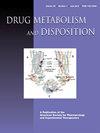摘要
过去几十年来,药物化学领域一直在努力降低新化学实体的 CYP 代谢程度。然而,这种方法却增加了非 CYP 介导途径代谢的敏感性,尤其是涉及醛氧化酶(AO)等其他 I 期酶的代谢。常用的体外模型,如悬浮或共培养的原代人类肝细胞,由于酶活性较低或水平不一,在评估由 AO 代谢的化合物的处置方面存在局限性。因此,我们需要一种具有高到中等水平 AO 活性的体外模型,它能更好地预测 AO 对药物代谢的贡献及其对药物清除率的影响。我们对新型 2D+ 原始人类肝细胞模型 TruVivo 进行了评估,以确定其在改善肝清除率(CLh)预测和确定 AO 对人类药物代谢的贡献方面的潜在用途。TruVivo 至少在 2 周内表现出稳定的 AO 活性水平,高于其他肝细胞模型的水平。使用 TruVivo 生成的参考化合物卡巴折伦、唑尼哌利特、扎来普隆和 O6-苄基鸟嘌呤的 CLh 预测值是报告的体内 CL 值的 2 倍以内。此外,经 AO 代谢的扎来普隆和唑尼哌啶的估计部分在报告的体内值的 25% 以内,而卡巴泽兰和 O6-苄基鸟嘌呤的估计部分则与在其他系统中生成的值相似。这些研究结果表明,TruVivo 可以提供一种新的方法来更准确地评估 AO 底物的 CLh,即使对清除率低的化合物而言,也可以延长孵育时间。意义声明:TruVivo 体外原代人类肝细胞模型在培养至少 14 天后仍能保持高水平的醛氧化酶 (AO) 活性,因此该系统适用于评估缓慢代谢的化合物,尤其是经 AO 代谢的化合物。因此,这种新型系统可能有助于提高人体对 AO 底物的清除率预测。Over the last several decades, efforts in medicinal chemistry have aimed to reduce the extent of CYP metabolism of new chemical entities. This approach, however, has led to increased susceptibility to metabolism by non-CYP-mediated pathways, particularly involving other phase I enzymes such as aldehyde oxidase (AO). Commonly used in vitro models, such as suspended or cocultured primary human hepatocytes, have limitations in evaluating the disposition of compounds metabolized by AO due to low or variable levels of enzyme activity. Thus, an in vitro model that exhibits high to moderate levels of AO activity that can better predict the contribution of AO to drug metabolism and its impact on drug clearance is needed. A novel, 2D+ primary human hepatocyte model, TruVivo, was evaluated for its potential utility to improve hepatic clearance (CLh) predictions and determine the contribution of AO to drug metabolism in humans. TruVivo demonstrated stable levels of AO activity for at least 2 weeks that were higher than levels in other hepatocyte models. CLh predictions generated using TruVivo for the reference compounds carbazeran, zoniporide, zaleplon, and O6-benzylguanine were within 2-fold of reported in vivo CL values. Furthermore, the estimated fraction metabolized by AO for zaleplon and zoniporide was within 25% of reported in vivo values, whereas that for carbazeran and O6-benzylguanine was similar to those generated in other systems. These findings suggest TruVivo may offer a novel means to assess CLh of AO substrates more accurately, even over extended incubation times for low clearance compounds. SIGNIFICANCE STATEMENT: The TruVivo in vitro primary human hepatocyte model maintains high levels of aldehyde oxidase (AO) activity for at least 14 days in culture, making the system suitable for evaluating slowly metabolized compounds, particularly those metabolized by AO. This novel system may therefore be useful for improving human clearance predictions for AO substrates.

 求助内容:
求助内容: 应助结果提醒方式:
应助结果提醒方式:


